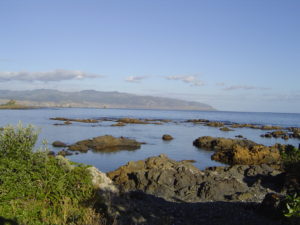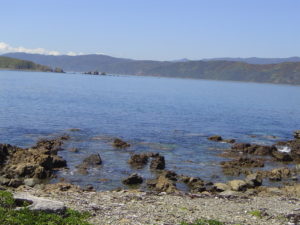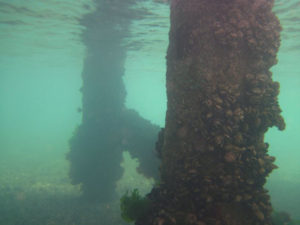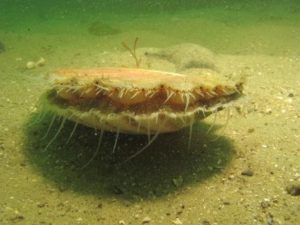Back in July we looked at how general conditions, dive objectives and your personal experience play into choosing the best dive site for you. The other key elements of site selection we missed last time were points of interest, your dive buddy and accessibility.
It goes without saying that every dive we make we want to have the best experience possible and nothing affects that more for me than getting the right site.
For a lot of people the mystery of the unknown is what draws them to choose a particular dive site but often this leads to aimlessly swimming over sand unless you try to identify a few points of interest before hand. A point of interest can be anything from a reef to a wreck or maybe a scallop bed. It’s important though when choosing a dive site to identify what points of interest it has to help give your dive direction. I find this particularly valuable when diving a site I’m not particularly familiar with. Let’s say a big southerly has blown in and the south coast is not divable.
I might consider diving Shelly Bay Wharf as the wharf structure itself is a fantastic point of interest. It provides a dive team a clear path to explore and can play host to any number of dive objectives, search and recovery, photography possibly even over head environment training.
I find identifying a point of interest before the dive most valuable when at site I’m not particularly familiar with. Swimming in circles crossing & your fingers that you find something interesting rarely works, so at unfamiliar sites I will often look at marine charts to see the shape of the subsurface reefs and use these as a guide to plan my dive and give me direction. So when choosing a dive site try to identify what points of interest it may have and how you can incorporate them into your dive and if they will accommodate your objective.
Never dive alone. A pretty simple concept – so it’s important that when we head out with our buddy we select a dive site that is appropriate for both of you. You should both feel comfortable and capable with the dive you are planning. Often inexperienced divers look to those with a few dives under their belt to make the big decisions on a dive like “where are we diving?” In my opinion we all have a duty of care in that situation, so we need to make sure that our site selection is within our buddies skill level. For example; while I am PADI Wreck Specialty Instructor it would be foolish for me to take a random diver into a wreck – without training they lack the ability to keep themselves safe and can put me in serious danger too. The same applies on something as seemingly straightforward as a scallop dive here in Wellington.
Scallops tend to be in their densest numbers around the 20m mark so taking a new Open Water Diver down to that depth without training or experience is asking for trouble. It’s dark gloomy and most importantly they may not be aware of how much faster they will be using their air. Choosing a dive site that’s based on your buddies skill and experience is just about keeping them safe, if you’re out diving you need someone to be there for you if you run into trouble, and they need to be able to handle that situation relatively comfortably.
The last thing I want to look at when it comes to choosing a dive site is accessibility. A full set of gear typically weighs around 37kg so obviously no one wants to lug that 500m from the car to the water. Accessibility is more than that though; for one thing, we need to consider how we are going to get in and out of the water. Next month I am taking a group of divers to Ngawi in the Wairarapa where it is quite likely we will be doing exits through the surf. This means timing your exit carefully with the waves, keeping a regulator in your mouth at all times, and crawling on your hands and knees out of the water all the while crossing your fingers you don’t get rolled by a random wave. This level of accessibility is one reason why this trip is only suitable for experienced divers.
Different dive sites may require different procedures, make sure you have a plan on how you will get in and out of the water at a particular dive site, and if it falls outside of your comfort level move to another site. It is also worth considering how accessible the site you are considering is for emergency services. I don’t mean that you should never dive anywhere remote but just think about if you need to take any extra emergency equipment and do you have access to said equipment – again if you don’t maybe consider another site.
Site selection does get easier – I promise. Points of interest, your buddy and accessibility tie directly into what we looked at in the last blog – conditions, objective and experience. None of these can be looked at in isolation, one tends to impact another and more often than not you find choosing an appropriate dive site is quickly whittled down to one or two options when you go through everything we have looked at. Choosing the right site can seem impossible at times but with a little planning and sometimes learning from our mistakes you will start to get the hang of it. Worst comes to worst you can always give us a call at the shop and ask what we think, we don’t have all the answers but we can at least try to point you in the right direction.
Paddy – PADI Staff Instructor



